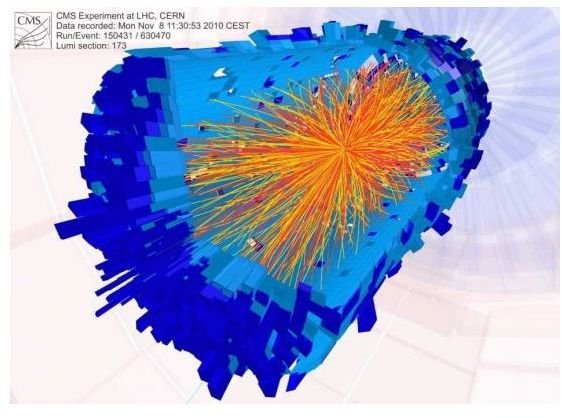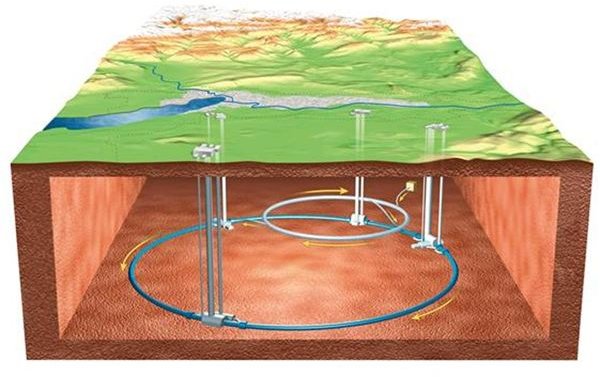CERN Large Hadron Collider Status
Heavy Hangs the Hand of Heaven
The status of the CERN Large Hadron Collider is just a few atoms away from its goal. The purpose of the Large Hadron Collider (LHC) is to pull back the veil of the origins of the Universe, and give us insight into, if not the moment of creation, at least the moment after the moment. Experiments performed in November of 2010 came close to doing just that.
Until that time, most experiments had accelerated hydrogen ions around the huge 27 km track to bang into each other at near the speed of light. But a group of CERN physicists reasoned that heavier ions would produce more energy when they collided. So they chose to send lead ions (the heaviest non-radioactive element—even gold is slightly radioactive) racing around the long track to smash together. They called their experiment ALICE.
On November 7, the first beams of lead (Pb is the chemical symbol) encountered each other at about 98 percent light speed. The LHC detectors showed the researchers some incredible results.
Expectations and Reality
The experiments continued until November 27. By then, the ALICE physicists had plenty of data to chew on for a long time. But they also had enough to draw some immediate conclusions, which they presented in two papers and a seminar/press conference in December.
Traditional theory predicted that the early universe—immediately after the big bang—consisted of a quark-gluon plasma (QGP). Quarks are the basic building blocks of all subatomic particles. Gluons are gauge bosons that mediate the color charge of quarks. Under normal conditions the two particles cannot exist apart.
The ALICE experiments recreated the QGP, proving that the very early universe was indeed made up of this weird subatomic soup. But it wasn’t what the CERN researchers expected.
The temperatures at these few nanoseconds after the big bang were hundreds of millions of degrees. Physicists expected the plasma to be a gas.
It was instead literally a soup. It was liquid! The very early universe was liquid.
Now that is liquid in a physicist’s terminology. Any normal liquid at those temperatures would boil away in a nanosecond. It was liquid in a hydrodynamical.way. That means it behaves as a liquid in terms of viscosity, behavior, and movement.
Of course, this liquid phase lasted only a few millionths of a second. Then the QGP began forming the subatomic zoo we know today. The picture below is right at the moment of beam collision.

Bear in mind, it cannot show the actual formation of the QGP. The picture shows tracks of individual particles escaping from the collision point. The QGP droplet created during the collision is very small (comparable in size to the lead nucleus) and it only exists for a very short time right after the collision. As soon as it is created it starts to cool down and decay, “exploding” into normal world particles. There is no way to measure QGP properties directly; the only chance is to measure properties of escaping particles and to assume properties of the originating QGP droplet from their distribution.
Jet Stream
One thing the picture is showing are collimated streams, or jets, of hadrons that are created almost instantaneously when the quarks and gluons decay. The QGP swamp the hadron jets in a process called jet quenching. You might think of it in the way water slows a bullet. ALICE researchers hope study of this jet quenching will give them insight into how quarks and gluons interact in the QGP, and the nature of the liquid plasma.
Since this breakthrough, the LHC has shown hints of the elusive and long sought after Higgs boson, I these hinst prove out, it will be a major breakthrough for subatomic physics!.
Sources
Summary: https://physicsworld.com/cws/article/news/44536
CERN: Elliptical flow of charged particles in Pb{Pb collisions arXiv:1011.3914v1
CERN: Charged-particle multiplicity density at mid-rapidity in central Pb{Pb collisions arXiv:1011.3916v2
Credits
LHC diagram: CERN
Pb/Pb beam collision: CERN
